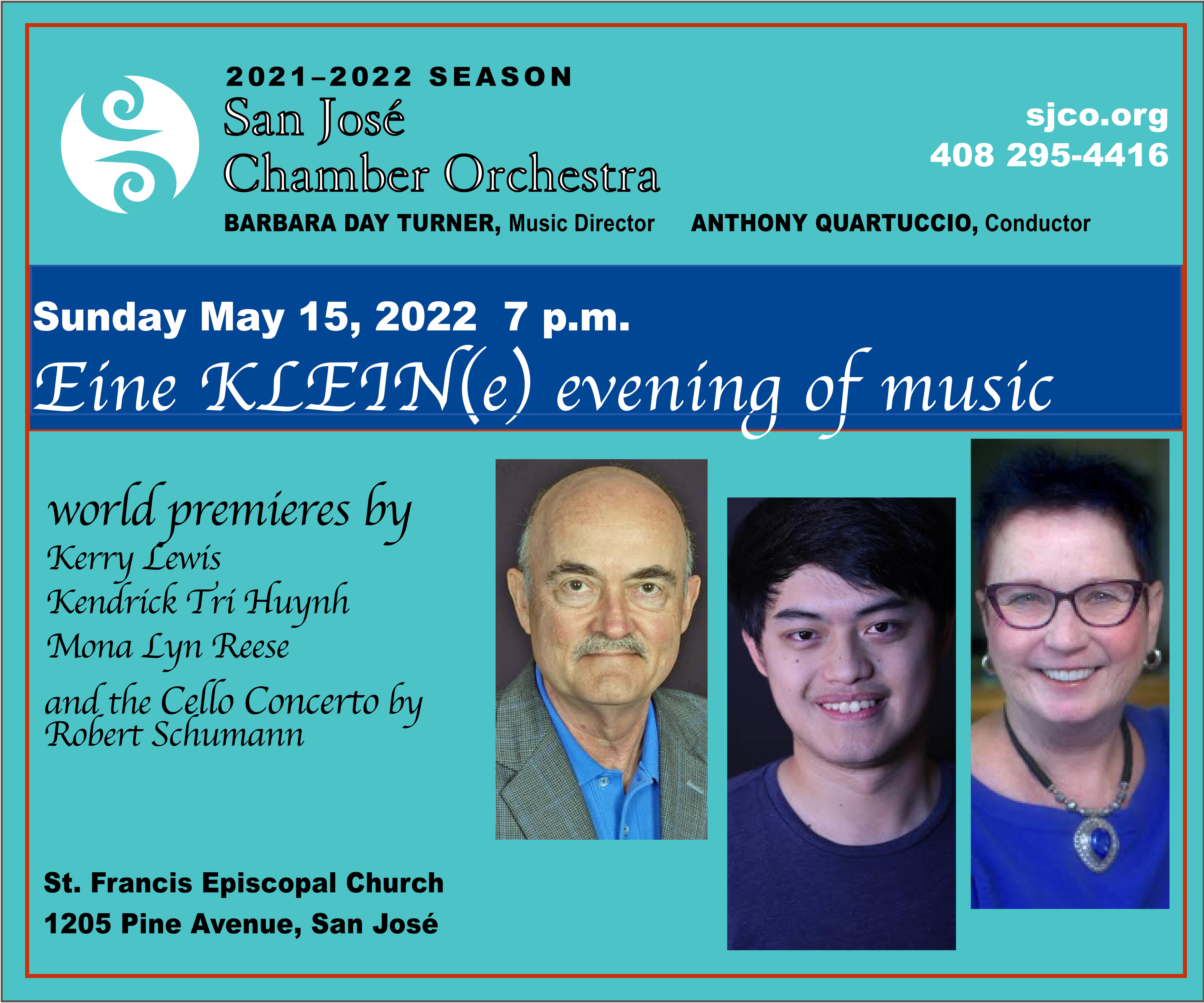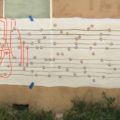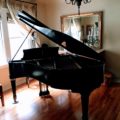“Oh Mona, this piece is so good! You should make a recording!” So I did. How long did it take from the first time I heard that statement to the release of the CD? The premiere of the piece, Choose Life, Uvacharta Bachayim, was in November of 1994. We released the recording in October of 2011. How long IS that? Seventeen YEARS! That’s a long, long time. Why does it take so long? How do you make a commercial CD anyway? Let me tell you.
Right after the piece premiered, I was very lucky to have been chosen Composer-in-Residence at the Billings Symphony in Montana. The director, Uri Barnea, was very interested in Choose Life and wanted me to score it for orchestra. The original score was for choir, soloists, actor, Gregorian Chant choir, organ and timpani. I agreed and immediately chained myself to the computer for months and months. That performance was successful and others began to be interested. The orchestration was a little too large for most performing spaces, so in 1998, I chained myself to the computer again to reduce the number of players from symphony orchestra to chamber orchestra. FYI, that is still a LOT of musicians, and a tremendous amount of money to pay for them. It also takes a huge commitment of time from the groups involved. I was very lucky to have Barbara Day Turner director of the San Jose Chamber Orchestra and Teri Larson, music director at the Basilica of Saint Mary in Minneapolis, want to make the recording as much as I did.
Of course, most people make a recording during the performance, but a live recording isn’t usually the best for a commercial release. So, a studio recording it is then. Let’s do it! Here’s what we need:
Five devoted conductors—check. Oh, why so many? This is a big piece. We need one for the orchestra and four for the choirs. Two chorus masters, one choral preparation conductor, and one for the Gregorian Chant choir. We got them all! Here’s Barbara Day Turner, our orchestra conductor.
50 Really good choral singers—check. We assembled our main choir from three great groups; Choral Cosmo, The Choral Project, and Prince of Peace Lutheran Church, all located in San Jose.
Gregorian Chant choir—check. The enchanted chanting of St. Benedict’s Monastery Schola located in St. Joseph, Minnesota.
Six soloists and an actor—check. Are they all conveniently located in San Jose, in California? No, they are not. They have to fly here from other places.
50 orchestra musicians—check. San Jose Chamber Orchestra is right here where we need them.
Huge recording studio—check. There are so many musicians in Choose Life, that the only space large enough to fit them is the Scoring Stage at Skywalker Ranch. That’s right, where they do the movies, where Yoda is.
Tons of Techs—check. We need engineers for recording, mixing, mastering; a fleet of setup and sound techs, producer, score reader, engineering assistants, the list goes on and on.
Wads of cash—not quite there yet. All these people have to be paid, right? We have several sponsors, but are still in the hole. We just have to sell a million CDs and we’ll be fine.
So, there you have it. Over 100 musicians and technicians all lined up and ready to go. It was easy to set up the dates too. Barbara did it all with one phone call! HAHA!
In June of 2008, we started with the easy part, recording the Gregorian chant. At least all those singers were in the same place and already knew the music. Our actor, Isabell Monk O’Connor drove from Minneapolis to St. Joseph and recorded with the sisters. Now, I say this was easy to arrange, but I’m sure Sister Christine, who had to make the arrangements, would disagree. Rockhouse Productions recorded them in the beautiful Sacred Heart Chapel at the monastery. I wish I’d been there, but I was still in Bangalore.
I did get back to San Jose in time for the start of choral rehearsals. Many people think that professional musicians have lots and lots of rehearsals and spend time making sure everything is perfect. They are wrong. Let’s talk about the difference between how a choral singer hears and performs and how an orchestra player does.
If you’re a choral singer, you learn how to sing with others, how to make your voice blend and meld with the other people in your choir as well as all the other techniques that go with making music. Your ears get as much training as your voice; to be able to sing the next pitch correctly on your next entrance, you have to listen to all the other singers and instruments. You might not sing for quite a long time, but must come in at the right pitch on the correct beat. You do this by listening for your note within the texture of the music. It isn’t always true that “the piano” will give you your pitch right when you need it. I’m the composer, I make sure that there is always an easy note for the singer to listen to, a place to get the next pitch. An easy note doesn’t mean the exact note you have to sing though. It might be a 4th or 5th or 3rd away from YOUR pitch. It for sure won’t be in your octave! You have to hear the note in your head.
For example, if you’re a soprano, your note might be in the basses or the horns; a tenor might get his pitch from the altos or the flute. You have to see where the pitch is and find it at the correct time. You ears are more important than your voice. You can have a beautiful voice, but if your ears can’t hear those key pitches…well! Back to the practice room for you. All our singers have lovely voices and great ears.
An orchestra player has to learn to play with their ears just as a choral singer does, but they have an advantage—you always know where your notes are. The combination of fingers on keys or strings to produce the pitch gives the player a solid idea of where they are at all times, even when practicing alone. Of COURSE we composers give them tons of difficult passages or dreary bits they have to count for weeks (alas for the tubas!) until they come in. Everybody has to watch the conductor, the music, and each other to know what to do. Difficult passages are best learned alone—wood-shedding we call it. Can’t play that spot in measure 37? Better wood-shed it a bit. Our orchestra players wood-shedded away and came to the Scoring Stage with their chops at the ready.
The choir had four rehearsals and the orchestra didn’t have any; they come prepared with all the notes learned already. Yup, all those years in music school are not for nothing! Open your mouth or pick up your horn, and out comes the music.
Here we are at the Scoring Stage. See the long tan rectangle at the top of the picture? That’s the movie screen. If we were syncing music to a movie, the conductor would be able to see it on the screen and hear a “click” so the images and music occur together. On the right side of the picture there is a glass and wooden booth. This is where the brass players sit. They’re behind the partition because the brass sound is very live and can bleed into the sounds from the other instruments. I’m sure many conductors would like to stick the brass behind a screen for live performances too!
Our brass players have plenty of mikes! You won’t have trouble hearing them on the recording.
Do you think it’s hard knocks to be a brass player and have to sit behind a screen? You should play percussion then. They have to sit in a little room all by themselves—not sit together either. One player to a booth. The percussion sits right in here with the door shut. As you see, the empty choral risers and music stands will be filled with musicians and block their view of the conductor.
This not good, so there’s a TV monitor in the percussion booths. Of course, they wear headsets so they can hear what she says. When the whole group assembles, this is what it looks like.
All the composers, score readers, chorus masters, engineers and technicians sit in the recording booth. The booth has the largest mixing board I’ve ever seen in my life, walls full of equipment, a large console that just bristles with knobs, meters of all kinds, computers, and snacks. Making music makes you hungry.
Here’s my favorite meter, not one I want to have work on my compositions! Leslie assured me it never came on. 
Here we are at the main board; Leslie Ann Jones is our recording engineer. I am so glad she was turning the knobs and not me! Next to her is Barbara Christmann, the producer and score reader. I’m way in the back.
That first session lasted two days. It was nerve-wracking and stressful, though we did great work. We had only a couple pieces to go when we ran out of time and energy too. Everyone thought we’d come back in a month and finish it off. Then, one of the soloists became very ill and wasn’t able to sing for a very long time. He did recover and sings even better than before. Back to Skywalker we went in October 2010 and finished the project in two short sessions.
Here are three of our soloists, Kevin Nakatani, Allison Charney, and Stephen Guggenheim. In another blog post, I’ll set up a slide show of our performers and conductors, but if you want to learn more about them now, visit:
http://www.chooselife-music.com/Choose_LIfe,_Uvacharta_Bachayim/Biographies.html
You can buy a CD from the Choose Life website, or click right here:

















No comments yet.